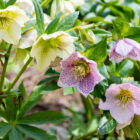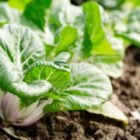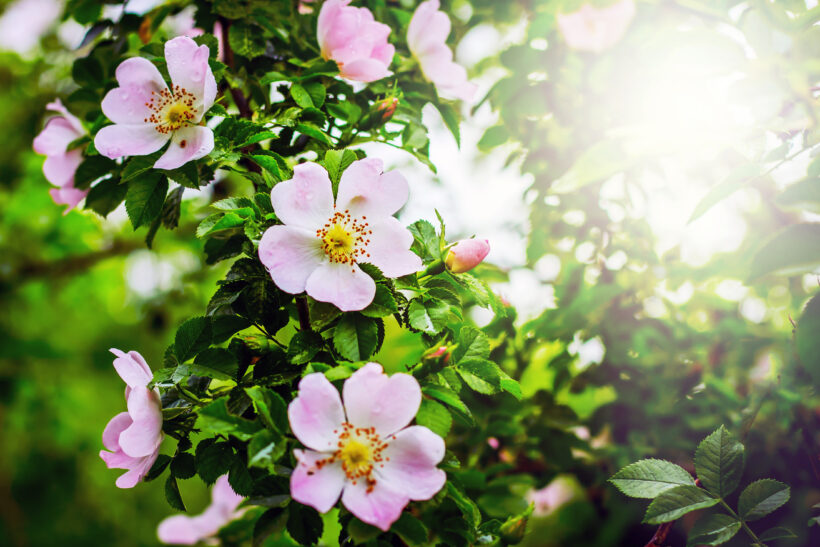
Dog rose, care and fertilisation
Dog rose, the tough plant mother of all roses
 Rosa canina, or dog rose, is a wild rose belonging to the Rosaceae family. Native to Europe and western Asia, it is a popular species of rose. It often grows in fields and forests but also in gardens. This thorny shrub is also considered as the mother of all roses. In fact, it forms the basis of many rose grafts. Apart from its cultivation for ornamental purposes, the dog rose is a hardy plant with multiple phytotherapeutic properties. Its rosehips are valuable allies for our health in general. Since ancient times, people had used it as a specific remedy against bites from dogs suffering from rabies.
Rosa canina, or dog rose, is a wild rose belonging to the Rosaceae family. Native to Europe and western Asia, it is a popular species of rose. It often grows in fields and forests but also in gardens. This thorny shrub is also considered as the mother of all roses. In fact, it forms the basis of many rose grafts. Apart from its cultivation for ornamental purposes, the dog rose is a hardy plant with multiple phytotherapeutic properties. Its rosehips are valuable allies for our health in general. Since ancient times, people had used it as a specific remedy against bites from dogs suffering from rabies.
The dog rose is a deciduous plant that adapts easily to any temperature conditions. It can reach a height of up to 3 metres and, depending on the growing conditions and its environment, can have an upright or arching habit. Its stem is woody and resistant to wind and other weather conditions. Thorns and small green leaves cover the branches. The flowers may be single or in groups of two or three. They are pale pink or deep white in colour. Each flower has five petals and numerous yellow stamens. The fruits (rosehips) are small red or orange berries and have many nutritional, medicinal, and cosmetic properties.
Environment, exposure, and climate tolerance
This wild rose grows easily in forests, hillsides, but also as hedges in gardens. The dog rose tends to grow vigorously. Thus, when its cultivation occurs in the garden as a hedge, there should be enough space to allow for adequate growth. It also adapts to all climatic conditions. It tolerates high and low winter temperatures but prefers sunny locations. Good exposure to the sun is essential not only for flowering but also for the production of rosehips. Therefore, when growing in the garden, it is necessary to fulfil these requirements for the plant in order to promote its healthy growth.
Soil and irrigation
For this ornamental shrub plant, the ideal soil type should be neutral or slightly acidic with a pH range between 6 and 7. It prefers well-drained soil in which water does not stagnate around the roots. Therefore, be careful and try to avoid clay soils and soils that retain excess water. Instead, prefer slightly sandy or loamy soils. Before rose planting, also prepare the soil by adding organic material. As for watering the plant, although it is drought-resistant, it is advisable to water during dry periods and while the plant is growing. Supply the water directly to the base of the plant, avoiding water stagnation.
Pruning
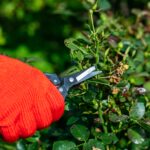 Pruning the rose hip is essential to keep the plant healthy and able to produce abundant flowers and fruit. While pruning, be careful to avoid damaging the plant. Follow the guidelines of Doctor Bioges and monitor your plant to ensure that it is responding well to pruning. Firstly, the ideal time to do this is in winter or early spring, when the plant is still in a dormant state or at least before new branches develop. It is necessary to use pruning shears and cut off dead, old, diseased or damaged branches. The cut should be diagonal and always distant from the buds.
Pruning the rose hip is essential to keep the plant healthy and able to produce abundant flowers and fruit. While pruning, be careful to avoid damaging the plant. Follow the guidelines of Doctor Bioges and monitor your plant to ensure that it is responding well to pruning. Firstly, the ideal time to do this is in winter or early spring, when the plant is still in a dormant state or at least before new branches develop. It is necessary to use pruning shears and cut off dead, old, diseased or damaged branches. The cut should be diagonal and always distant from the buds.
Fungal diseases, pests and insects that can attack dog roses
This wild rose can be attacked by pests and insects, but also by fungal diseases. In particular, the dog rose may suffer attack by aphids that feed on its sap, causing yellowing of the leaves, plant weakness and the production of honeydew (a sugary substance). Mealybugs, which attach themselves to the leaves and branches of roses, also feed on their sap, causing plant weakness and leaf deformity. But there are many others, such as beetles, whiteflies and root nematodes. They also usually suffer from fungal diseases: when faced with such problems, branches and leaves attacked by pests and diseases should be removed and destroyed immediately. In addition, an insecticide or fungicide should be used if the infestation is severe.
How to reproduce roses
There are several methods of reproducing roses. Among the most common are reproduction from seed, by cuttings and by grafting. The rose hip, as already mentioned, forms the basis of many rose grafts. Therefore, it is often chosen as rootstock for the following reasons:
- It is resistant to various fungal diseases such as rust and powdery mildew.
- It is particularly vigorous. Therefore, it provides grafted roses with good growth and stable support.
- It is compatible with many rose varieties. Therefore, gardeners can graft a wide range of roses onto this rootstock.
- It can easily adapt to different soil conditions.
How do you graft roses?
Grafting roses is not easy. In general, gardeners and nurserymen carry out this practice. Therefore, if you are planning to graft roses, it is preferable that you contact a rose grafting expert directly. This practice consists of joining a part of a plant (‘graft‘) with another plant (‘rootstock‘). This technique is useful to combine the characteristics of two different rose varieties.
How do you fertilise roses?
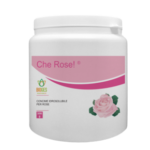 It is important to regularly fertilise the dog rose in order to promote the healthy growth of the plant and to stimulate the production of flowers and rosehips. It is advisable to use Che Rose!, Bioges’ rose fertiliser, to spread around the base of the plant, avoiding direct contact with the stem and roots. Apply it at least twice a year, namely: before spring starts and at the beginning of summer. If you notice excessive leaf growth to the detriment of the flowers, you should reduce the nitrogen supply to encourage more flowering.
It is important to regularly fertilise the dog rose in order to promote the healthy growth of the plant and to stimulate the production of flowers and rosehips. It is advisable to use Che Rose!, Bioges’ rose fertiliser, to spread around the base of the plant, avoiding direct contact with the stem and roots. Apply it at least twice a year, namely: before spring starts and at the beginning of summer. If you notice excessive leaf growth to the detriment of the flowers, you should reduce the nitrogen supply to encourage more flowering.
How to use rose hips?
 Rose hips are rich in vitamins, antioxidants and other substances beneficial to our health. This is why they are often used in the preparation of herbal teas and infusions as well as jams or marmalades. They are often processed into food supplements in the form of capsules or tablets. Thus, they are ideal for those who wish to benefit from their nutritional properties in a practical way, such as their use in cosmetic products. Indeed, rosehip oil is famous as it has many beneficial properties for the skin.
Rose hips are rich in vitamins, antioxidants and other substances beneficial to our health. This is why they are often used in the preparation of herbal teas and infusions as well as jams or marmalades. They are often processed into food supplements in the form of capsules or tablets. Thus, they are ideal for those who wish to benefit from their nutritional properties in a practical way, such as their use in cosmetic products. Indeed, rosehip oil is famous as it has many beneficial properties for the skin.
Keep following us for all the news about the care of your garden!

